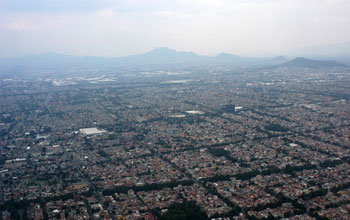West Antarctic Warming Triggered by Warmer Sea Surface in Tropical Pacific
ScienceDaily (Apr. 10, 2011) — The Antarctic Peninsula has warmed rapidly for the last half-century or more, and recent studies have shown that an adjacent area, continental West Antarctica, has steadily warmed for at least 30 years, but scientists haven't been sure why.
New University of Washington research shows that rising sea surface temperatures in the area of the Pacific Ocean along the equator and near the International Date Line drive atmospheric circulation that has caused some of the largest shifts in Antarctic climate in recent decades.
The warmer water generates rising air that creates a large wave structure in the atmosphere called a Rossby wave train, which brings warmer temperatures to West Antarctica during winter and spring.
Antarctica is somewhat isolated by the vast Southern Ocean, but the new results "show that it is still affected by climate changes elsewhere on the planet," said Eric Steig, a UW professor of Earth and space sciences and director of the UW Quaternary Research Center.
Steig is the corresponding author of a paper documenting the findings that is being published April 10 in the journal Nature Geoscience. The lead author is Qinghua Ding, a postdoctoral researcher in the UW Quaternary Research Center. Co-authors are David Battisti, a UW atmospheric sciences professor, and Marcel Küttel, a former UW postdoctoral researcher now working in Switzerland.
The scientists used surface and satellite temperature observations to show a strong statistical connection between warmer temperatures in Antarctica, largely brought by westerly winds associated with high pressure over the Amundsen Sea adjacent to West Antarctica, and sea surface temperatures in the central tropical Pacific Ocean.
They found a strong relationship between central Pacific sea-surface readings and Antarctic temperatures during winter months, June through August. Though not as pronounced, the effect also appeared in the spring months of September through November.
The observed circulation changes are in the form of a series of high- and low-pressure cells that follow an arcing path from the tropical Pacific to West Antarctica. That is characteristic of a textbook Rossby wave train pattern, Ding said, and the same pattern is consistently produced in climate models, at least during winter.
Using observed changes in tropical sea surface temperatures, the researchers found they could account for half to all of the observed winter temperature changes in West Antarctica, depending on which observations are used for comparison.
"This is distinct from El Niño," Steig said. That climate phenomenon, which affects weather patterns worldwide, primarily influences sea-surface temperatures farther east in the Pacific, nearer to South America. It can be, but isn't always, associated with strong warming in the central Pacific.
Steig noted that the influence of Rossby waves on West Antarctic climate is not a new idea, but this is the first time such waves have been shown to be associated with long-term changes in Antarctic temperature.
The findings also could have implications for understanding the causes behind the thinning of the West Antarctic Ice Sheet, which contains about 10 percent of all the ice in Antarctica.
Steig noted that the westerly winds created by the high pressure over the Amundsen Sea pushes cold water away from the edge of the ice sheet and out into the open ocean. It is then replaced by warmer water from deeper in the ocean, which is melting the seaward edge of the ice sheet from below.
The work was funded by the National Science Foundation.
Journal Reference:
- Qinghua Ding, Eric J. Steig, David S. Battisti, Marcel Küttel. Winter warming in West Antarctica caused by central tropical Pacific warming. Nature Geoscience, 2011; DOI: 10.1038/ngeo1129


